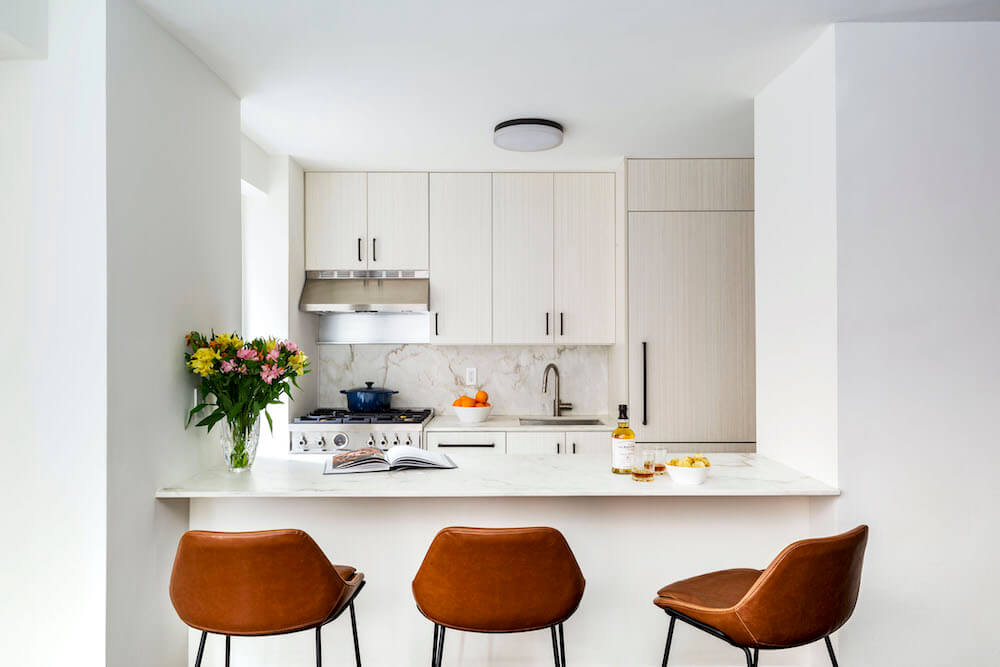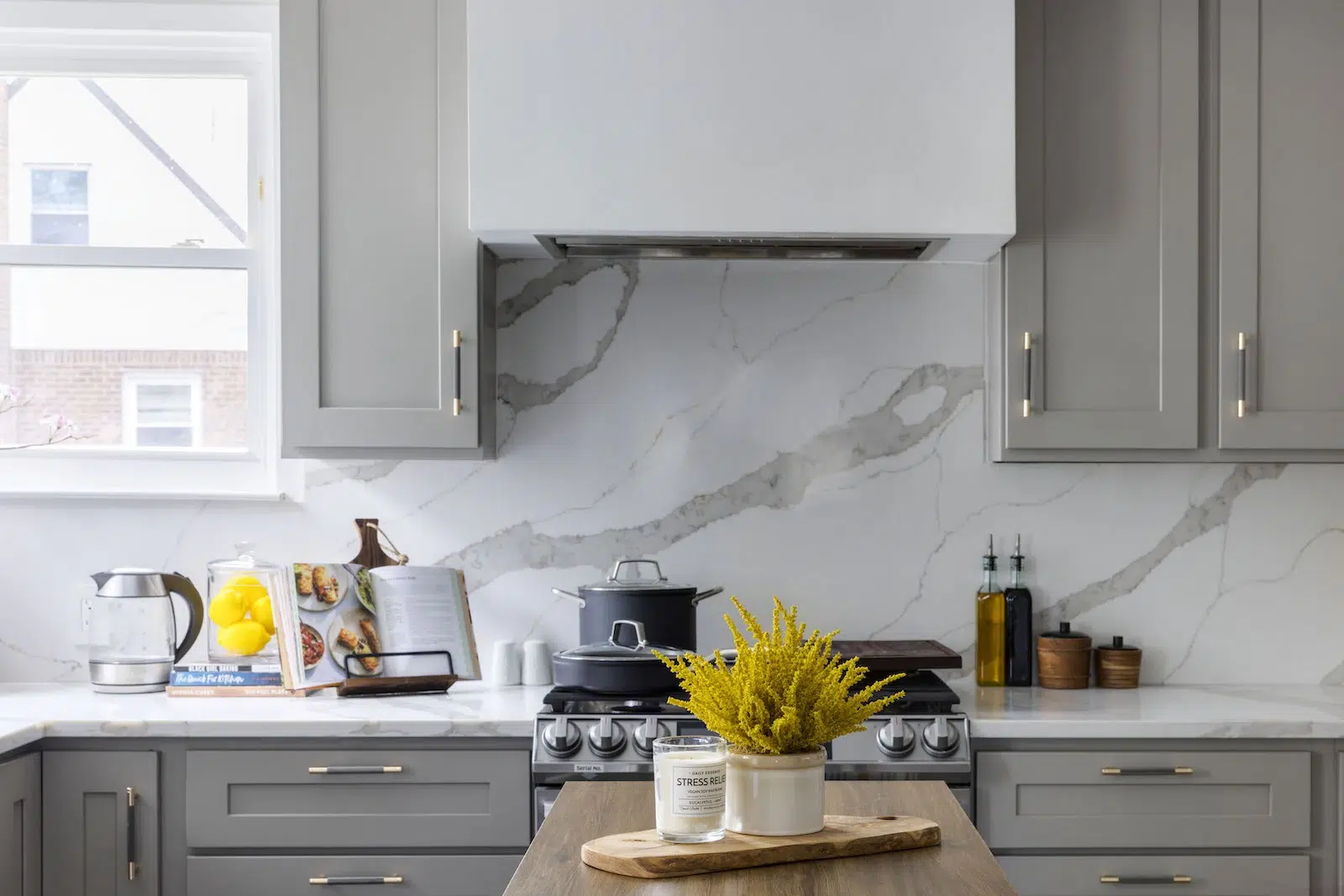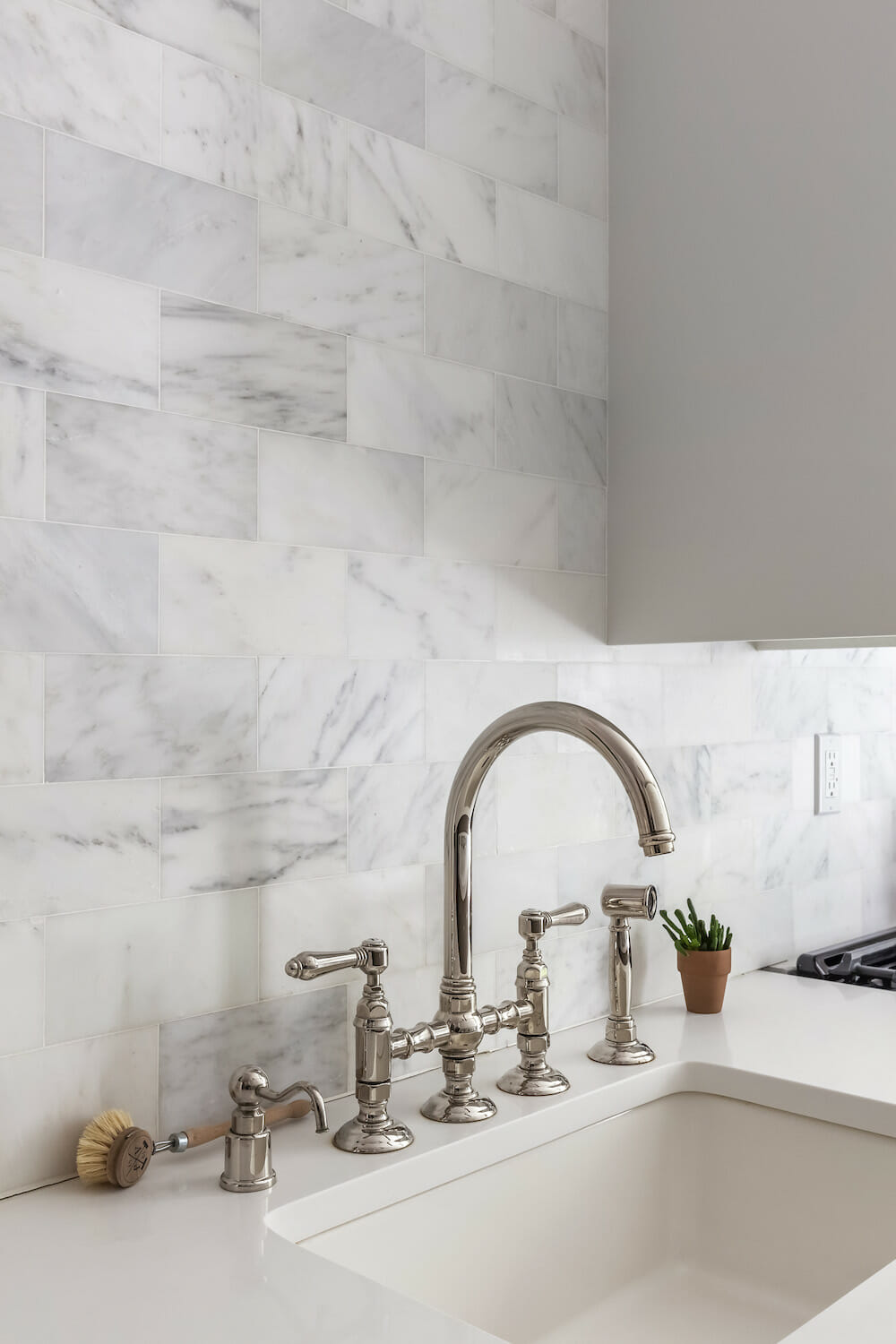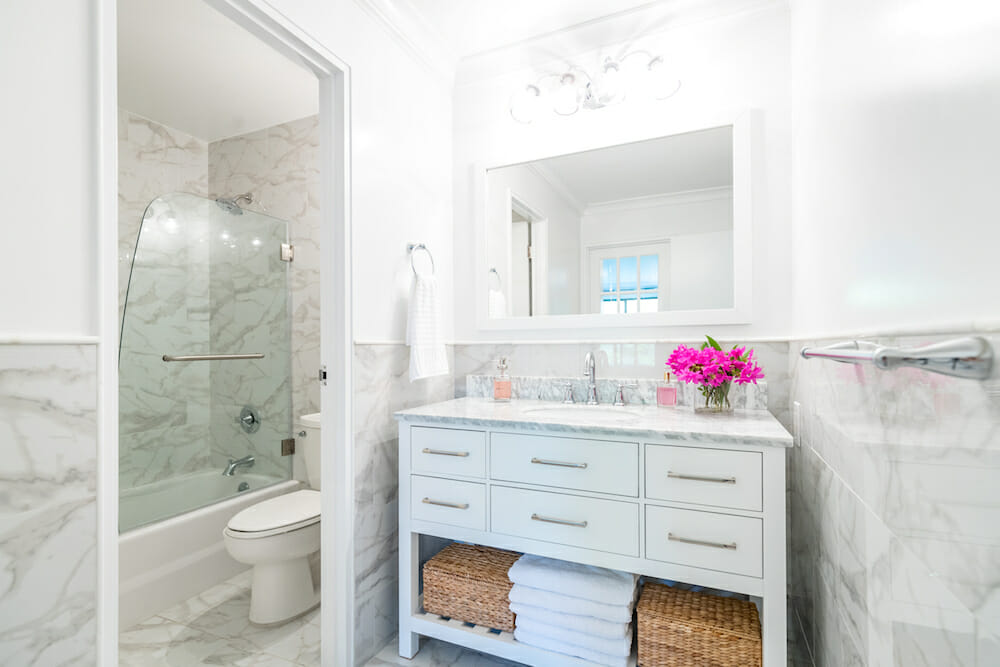You’ve likely seen them: those stunning white slabs with dramatic veins that scream luxury. But while Carrara and Calacatta marble might sound alike and even come from the same Italian region, they are far from interchangeable. In fact, they’re distinct enough that once you know what to look for, you’ll never confuse them again.
Both are prized for adding unparalleled elegance to kitchens, bathrooms, and other high-impact areas of the home.
Here, we’ll cut through the confusion to clarify the critical distinctions, helping you understand the pros, cons, and when to choose one over the other for your renovation.
Carrara vs Calacatta Marble: What are they?
Carrara marble
This is the classic, understated choice. Carrara marble hails from the Apuan Alps in northwest Italy, near the town of Carrara itself. Historically, it’s graced everything from ancient statues to grand public buildings, but today, it’s a staple in residential homes looking for that timeless marble aesthetic. The defining characteristics? Its field, or base color, is a subtle light-gray with a hint of blue, and its veins are also light-gray, soft, and feathery. These veins don’t aggressively stand out; instead, they appear to gently dissipate into the background, creating a softer, more blended look.
Post your project on Sweeten for free and make your dream renovation a reality. Sweeten simplifies home renovation by connecting homeowners with top-rated general contractors, handling the vetting process and project management. To learn more about how we can help, check out our home renovation services.
Calacatta marble
While technically a type of Carrara marble (they share the same overall Tuscan origin), Calacatta marble is in a league of its own. Its most coveted feature is its strikingly white field – typically, the whiter the background, the more expensive the slab. But what truly sets Calacatta apart is its bold, thick, and distinctly defined veining. Unlike Carrara’s subtle whispers, Calacatta’s veins make a statement. They can range dramatically in color, from deep grays and earthy beiges to rich browns and even luxurious gold. Crucially, Calacatta slabs feature fewer veins, but each one stands out in sharp, high-contrast relief against the pristine white.

Renovate to live, Sweeten to thrive!
Sweeten brings homeowners an exceptional renovation experience by personally matching trusted general contractors to your project, while offering expert guidance and support—at no cost to you.
(Above) Sweeten homeowner Dan’s kitchen with Calacatta marble
Calacatta vs Carrara Cost: Which is more expensive?
Let’s be clear: no marble is a “budget” material. However, when comparing these two, there’s a significant price difference. Carrara marble is notably more affordable than Calacatta, often costing around half the price.
But what exactly drives that premium price tag?
Should you choose Carrara or Calacatta marble?
Carrara marble
If your goal is to infuse a space with the classic beauty of marble without making it the absolute focal point, Carrara marble is your ideal choice. It’s the understated luxury that blends seamlessly into a room’s overall design rather than demanding all the attention. This “backseat” quality makes Carrara exceptionally versatile, allowing it to be used across large surfaces like extensive wall cladding or entire flooring without overwhelming the eye.
Calacatta marble
For homeowners who see marble as a work of art and want to showcase a truly unique, breathtaking stone, Calacatta marble is the clear winner. This is the marble that embodies what many envision when they think of “marble” – pure drama and elegance. Because its veining is so singular and impactful, Calacatta is perfectly suited for bookmatching. This technique involves pairing two slabs cut sequentially from the same block, creating a mesmerizing, mirrored pattern that looks like an open book. While you can bookmatch Carrara, its subtle veins simply don’t deliver the same “wow” effect that Calacatta’s distinctive patterns do.
(Above) Sweeten homeowners Tina and Andrew’s kitchen with Carrara marble
Pros and cons of marble
Pros Marble isn’t just popular; it’s practically legendary. Here’s why it holds its coveted spot:
- Premium Aesthetic: It instantly elevates any space.
- High Resale Value: A smart investment for your home.
- Truly Unique: No two slabs are identical; you get a one-of-a-kind surface.
- Natural Material: Sourced directly from the earth.
- Longevity: With proper care, it lasts for decades.
Cons But marble isn’t without its quirks. Understand these before you commit:
- Expensive: Especially Calacatta.
- Soft & Prone to Chips: Not as durable as harder stones like granite.
- Heavy: Requires robust structural support for installation.
- Susceptible to Stains: Porous nature means spills need quick clean-up.
- Requires Ongoing Maintenance: Needs regular sealing and gentle cleaning.
Why is marble popular?
Some design trends fade, but marble’s appeal remains remarkably stable. Why? Because quite simply, no other material truly looks or feels like it. For many high-end or classically styled homes, marble isn’t just a choice—it’s the choice, embodying a sense of timelessness rooted in its rich history, from Roman empires to Renaissance sculptures.
Beyond its aesthetic, marble is also inherently functional: it’s dense, heavy, and exceptionally heat-resistant. And while Italian marble often gets the spotlight, it’s worth noting that marble is more globally available than you might think, with significant quarries in Spain, India, China, Turkey, Greece, and even the U.S., offering a diverse range of types beyond Carrara and Calacatta.
Here’s how Sweeten works: We pre-screen them for our network, carefully select the best ones for your remodeling project, and work closely with hundreds of general contractors every day.
(Above) Sweeten homeowner Tatiana’s bath with Calacatta marble
Best uses of marble at home:
So, where does marble make the most sense in your house?
- Kitchen Counters: The ultimate statement surface for your main countertops.
- Kitchen Island Counters: A dramatic centerpiece, whether alone or complementing other counter materials.
- Kitchen or Bathroom Backsplashes: Adds elegance, though avoid directly behind high-heat cooking zones.
- Entry or Foyer Hallways: Creates a grand, welcoming impression right from the front door.
- Bathtub or Shower Surrounds: When properly sealed, it’s waterproof and adds spa-like luxury.
- Bathroom Floor Tile: Durable and water-resistant for high-traffic bathroom floors.
- Fireplace Surrounds: Its polished surface is easy to clean and adds classic grandeur.
Planning to renovate? Get free cost estimates from our partner GCs!
Get matched with our vetted general contractors and receive at least 3 quotations for free! You can also find endless home renovation inspiration, detailed guides, and practical cost breakdowns from our blogs.
View the original article and our Inspiration here




Leave a Reply